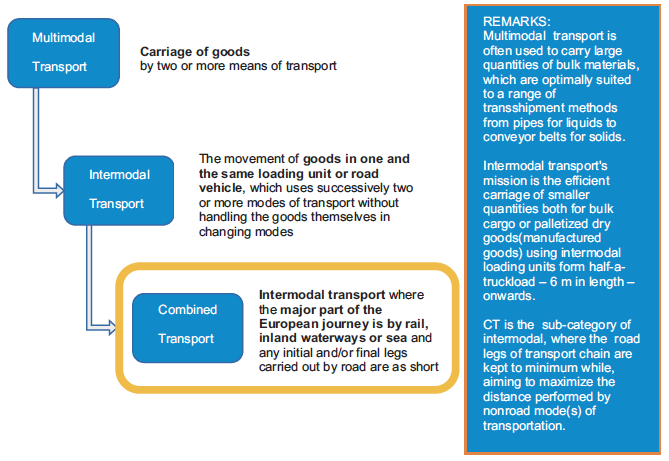For the purpose of the project, the COMBINE consortium partners have selected the following definitions:
- Multimodal transport / intermodal transport / CT: the current definition of the UNECE glossary without modifications (Figure 1.1).
- Intermodal loading units: containers, swap bodies and semi-trailers suitable for CT. This is a mix of current definitions on intermodal transport units and intermodal loading units. Road vehicles are considered, in the context of COMBINE, as ILUs as well.
- Intermodal terminal: an installation for transshipment of standardized loading units (containers, swap bodies, semi-trailers) with at least one of the modes served must be rail or inland waterway

Figure 1.1. Scheme for definitions of multimodal/intermodal and CT correlations. Source: based on Terminology on CT, UN/ECE, 2001.
For a specific BSR definition, it is recommended to promote a coherent and harmonized definition at the European level (i.e., through the revision process that will be soon started by the Commission). This definition should consider the following elements:
a) The type of legislation: Directive or Regulation
b) CT and/or intermodal transport
c) The exact scope (i.e., cross border and domestic)
d) All forms of CT should be included.
e) All types of loading units should be integrated including the minimum size.
f) The notion of “nearest suitable terminal” should be further explicated
g) Determine the distance for the road legs with various cases (i.e., hinterland maritime, continental)
h) Special clause for road-rail transport when exceeding distances
i) Temporary measures
j) Special clause for terminals
k) Greening aspects (i.e., use of alternative fuels for road legs and non-road legs)